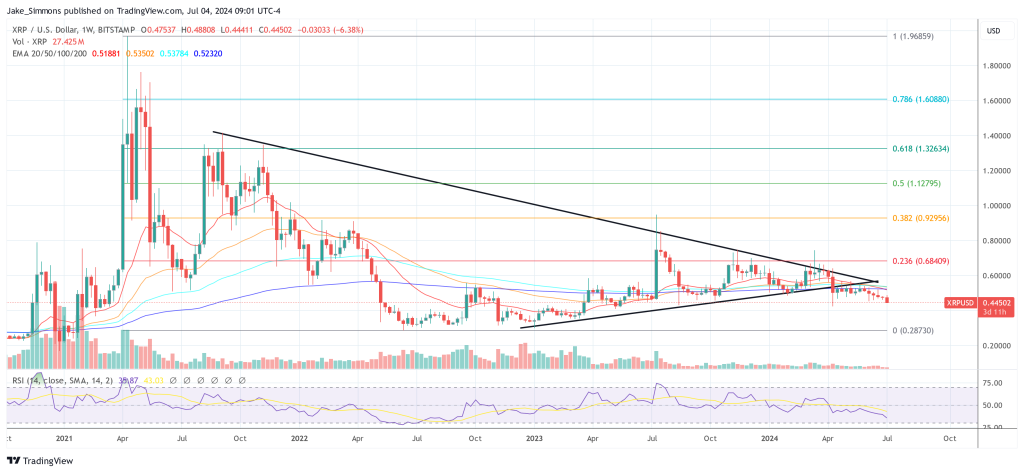On July 3, 2024, Ripple Labs introduced a significant enhancement to its API environment called the “Try It” feature, now part of the Ripple Payments API documentation. This development marks a pivotal change in how developers can interact with the APIs by allowing them to execute real-time tests without the necessity for logins or real fund transactions.
Ripple Further Improves The Developer Experience
The “Try It” feature has been integrated into several API services including the Ripple Payments API, Smart Liquidation Service API, and the Report Service API. It is designed to provide immediate and realistic responses from a mock server, which mimics the behavior of the live servers in a controlled environment. This enables developers to send simulated API requests to any endpoint and receive feedback instantly.
Accessibility of this feature is straightforward: it is directly embedded in the API documentation pages. Developers interested in testing the GET /fees operation, for example, would navigate to its specific API reference docs-page, use a clearly marked “Try It” button to activate the testing interface, enter any required data in the security and parameters tabs, and submit the request. The interface then displays the endpoint’s response based on the input parameters, offering insights into how the real API would behave under similar conditions.
The introduction of this feature is transformative for developers in several key aspects. First, it enables immediate testing and experimentation with the APIs without the hurdles of the standard setup processes that involve obtaining API credentials and setting up a secure environment. This not only speeds up the initial exploration and familiarization phase but also significantly lowers the entry barrier for new developers or those evaluating Ripple’s offerings for potential integration.
Furthermore, developers can gain a deeper understanding of how the APIs handle requests, including the structure of responses, pagination mechanisms for endpoints that return arrays of objects, and the effects of varying request parameters. This practical exposure is invaluable as it equips developers with the knowledge needed to effectively integrate and utilize the APIs in their own applications.
By removing the need for a contracting process to access testing functionalities, Ripple has also accelerated the integration timeline for developers. They can now test and iterate on their integrations independently and with greater flexibility, reducing dependencies on formal access grants and thus speeding up the overall development cycle.
Looking ahead, Ripple plans to expand the “Try It” feature to include additional APIs, such as the Payments Direct API reference documentation. This ongoing expansion underscores the firm’s commitment to improving developer engagement and simplifying the integration process.
As the “Try It” feature goes live and becomes a standard tool in the Ripple API documentation, developers are encouraged to leverage this new capability to enhance their understanding and efficiency in working with Ripple’s extensive suite of financial tools. “The product docs team is working on enabling this feature on the Ripple Payments Direct API reference doc pages soon. Stay tuned for additional updates,” the Ripple team stated.
At press time, XRP traded at $0.44502.

